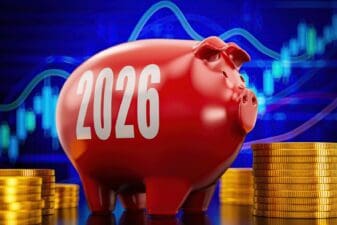There are many ways to earn a second income but most require extra time and work. With my days already busy, I simply don’t have time for that.
But if I just cut my spending by £5 a day, I could save up to £1,825 a year. By investing this money in an ISA, I can maximise my returns and save on tax.
I think a Stocks and Shares ISA‘s the best option. This convenient savings account allows UK residents to invest up to £20,000 a year into a wide range of assets. And with no tax on the capital gains, I get to keep all my profits!
Please note that tax treatment depends on the individual circumstances of each client and may be subject to change in future. The content in this article is provided for information purposes only. It is not intended to be, neither does it constitute, any form of tax advice. Readers are responsible for carrying out their own due diligence and for obtaining professional advice before making any investment decisions.
What can I expect from £1,825? Well, the FTSE 100 returns on average about 7.5% a year, which is only £136.87. Not exactly a life-changing amount!
Is 7.5% the best I can do?
I might be able to increase that number by investing in companies that pay dividends. As a shareholder, I’ll get back a percentage of my investment as cash or shares on a regular basis (usually two or four times a year). By reinvesting these payments, my savings grow quicker, and so will my returns.
Let’s consider oil giant BP (LSE: BP). It’s had a hard time recently, with the share price falling 14.4% in the past year.
A concerted effort to shift from fossil to renewable energy has strained the company’s profits. It’s a difficult process compounded by the conflicting interests of shareholders and environmental groups. This is one major concern I have about BP because if it doesn’t manage the process adequately, things could go south.
But lately, things are improving and analysts expect BP to do well in the coming year. The average 12-month price target is almost 30% up from the current price!
Calculating returns
Last year, BP paid four dividends amounting to a total of 28.42 cents a share over the year. With the share price of £4.29, that’s a yield of almost 6%. What’s more, the shares have fallen in price by 9% this year, so they’re cheaper than usual.
The dividends would pay me about an extra £100 after one year. However, after five years of daily contributions, my annual dividend could be around £550. After 10 years, I would’ve saved up £29,000 and be earning a second income of almost £1,800. That’s still not much.
Fortunately, the miracle of compounding returns means it grows rapidly in the next 10 years. After 20 years, I’d have £138,450 saved, paying me £8,500 a year in dividends. And from the savings I can withdraw almost £7,000 a year for 20 years. Now we’re talking!
Aiming for a good average
The above example assumes the yield and growth are maintained, which may not happen. So I wouldn’t rely on my BP shares alone to secure me that kind of return. Its share price might not grow by 7.5% a year on average and its dividend yield might decrease.
So to try to maintain a good average of yield and returns, I’d distribute my investments between 10 or 20 different stocks.
I’d also include a mix of dividend payers and growth stocks from various industries. This helps to protect against regional or industry-specific risks.







